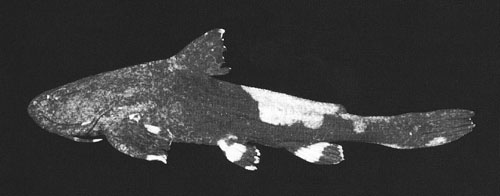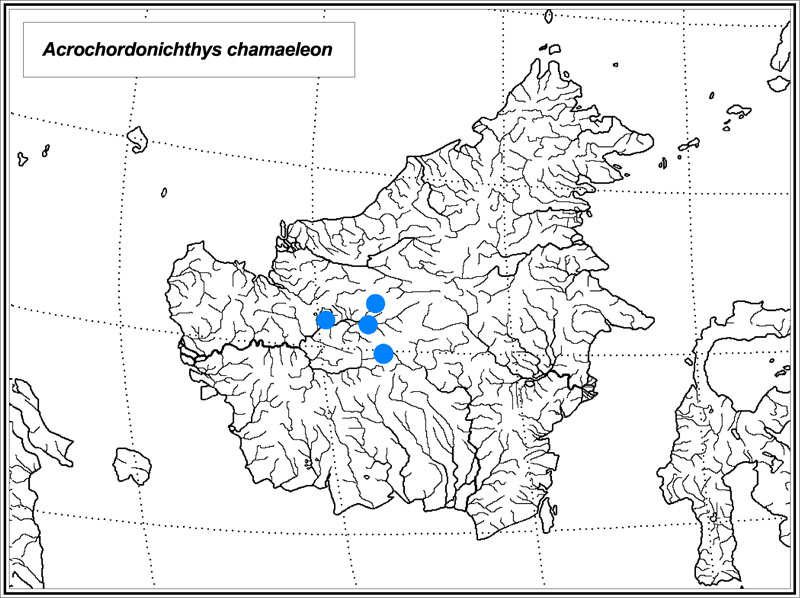
Kapuas River drainage in Borneo
51.5 mm SL, ZRC 38830
Acrochordonichthys chamaeleon (Vaillant 1902)
Identification: Acrochordonichthys chamaeleon has a moderately compressed body, a wide head (25-29% SL), a rounded snout when viewed dorsally, a comparatively deep caudal peduncle (5-6% SL), and short nasal barbels (1-6% head length). The head is covered with small, indistinct tubercles. Tubercles on the body are arranged in 5-6 horizontal rows on each side. The dorsal surfaces of the head and body are chestnut brown. Small dark brown patches are sometimes randomly scattered on the dorsal surface of the head. The lateral and sometimes ventral surfaces of the body posterior to the dorsal-fin base are dark brown. There is a chestnut brown saddle on the dorsolateral surface over the adipose fin, which may be absent and replaced by a longitudinal series of chestnut brown spots merging to form patches. The belly, chest and ventral surfaces are lighter in color and lack spots. The dorsal, pectoral, pelvic and anal fins are cream-colored with 1-2 dark brown bands; one band usually occurs at the base of the fins and the other occurs near the edge. Some specimens have a reversed color pattern on the fins resulting in dark brown fins with cream-colored bands. The cream-colored caudal fin has a dark brown band near the edge and a dark brown patch at the base of the caudal peduncle. The cream-colored or dark yellow barbels and pectoral spines sometimes have dark brown spots on the dorsal surfaces. Some specimens have dark brown coloring throughout, lacking spots and a saddle. The premaxillary toothband is not exposed when the mouth is closed. The stout pectoral spine has 3 serrations on the posterior edge. There are 5-6 branchiostegal rays and 35-36 vertebrae.
Range: This species is found in the Kapuas River drainage in western Borneo.
Habitat: A. chamaeleon is found among woody debris in current in creeks and small to medium-sized rivers.
Similar species: A. rugosus, A. falcifer and A. pachyderma have longer nasal barbels, closer-set eyes, a head with less gently-sloping lateral margins and a slightly more pointed snout.
Information from Ng, H. H. and P. K. L. Ng. 2001. A revision of the akysid catfish genus Acrochordonichthys Bleeker. Journal of Fish Biology 58: 386-418.
